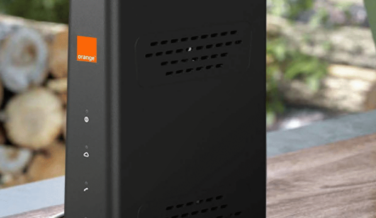Long-standing support and leadership in the RDK community is empowering NSPs to deliver more seamless, efficient user experiences.
- Since 2012, Technicolor Connected Home, known as Vantiva, has been providing RDK solutions as a founding contributor to RDK.
- In 2014, Technicolor created the software architecture that enabled RDK to expand to broadband devices.
- Today, all of Technicolor’s DOCSIS gateways with Wi-Fi capabilities ship with RDK as the default software stack.
The RDK (Reference Design Kit) is an open source software platform for the connected home that standardizes core functions used in broadband devices, set-top boxes, and IoT solutions. RDK software enables operators to manage their devices; control their business models; and customize their apps, UIs and data analytics to improve the customer experience and drive business results.
Initially, the community was joined by OEMs, Systems Integrators, SoC companies and software vendors as well as MVPDs to create a community of innovators focused on bringing video experiences to consumers faster on next-generation set-top boxes. RDK provided a common method to manage complex video and management functions such as rendering, content, content security, device management, networking, & peripherals.
Technicolor Connected Home is a founding contributor to RDK, providing RDK solutions across QAM, IP and Hybrid devices since 2012. One of Technicolor’s first entries into RDK was in 2013 with the development of a next generation video client based on hardware and software specifications developed by the RDK community. Bundled with a multituner gateway from cable operators, the Technicolor MediaPlay client offered an open solution to develop and deploy new services and applications more efficiently across heterogeneous cable platforms.[1]
In 2014, Technicolor created the software architecture that enabled RDK to expand its applicability to broadband devices to meet the demand of operators worldwide to have greater technical commonality among suppliers. For broadband gateways, RDK provides a common technical method, across chipset suppliers and OEMs, to manage home-networking interfaces, device management, diagnostics, and IoT interfaces, such as Bluetooth, Thread and Zigbee.
Fast forward to today, and all of Technicolor’s DOCSIS gateways with Wi-Fi capabilities ship with RDK as the default software stack. In addition, as EPON (Ethernet Passive Optical Network) gateways become available on Technicolor’s roadmap, they will ship with RDK-B stack, just like our current DOCSIS Gateways.
“Technicolor’s decision to adopt RDK as the default software stack for their DOCSIS gateways is a clear testament to their leadership within the RDK community,” said Steve Heeb, President and General Manager of RDK Management. “Service providers automatically gain the technical benefits of RDK and can now focus their efforts on the new services that drive their businesses. We’re grateful for Technicolor’s long-standing support of RDK, and we look forward to their future contributions and innovations.”
Technicolor recently participated in the 2019 RDK Americas Summit on March 19, 2019 at the new Comcast Technology Center in Philadelphia. Technicolor demonstrated the latest innovations on their RDK-based gateways and set-top boxes including recent integrations with partners like CUJO AI and AirTies, who also attended the event.
In summary, “Technicolor has developed a broad set of offerings, based on open source software like RDK, that are enhancing the value proposition our NSP clients can bring to their subscribers. When a consumer at home wants to use value-added services — whether it’s video, Wi-Fi, or IoT — they really are not interested in what’s under the hood. What they want to see is that they have a seamless, very efficient user experience that is decoupled from the underlying gateway stack as well as underlying access. That is what these standards enable,” says Ashwani Saigal, Vice President of Broadband for Technicolor Connected Home.
Today, the RDK community is comprised of more than 350 companies worldwide including CPE manufacturers, SoC vendors, software developers, system integrators, and service providers. In total, more than 25 video and service providers across North America, Europe, Latin America, and Asia are members of the RDK community and are in various stages of evaluation, testing, trials, or deployment.
For more information on the tools, training, and events provided by RDK Management, check out RDK Central.









